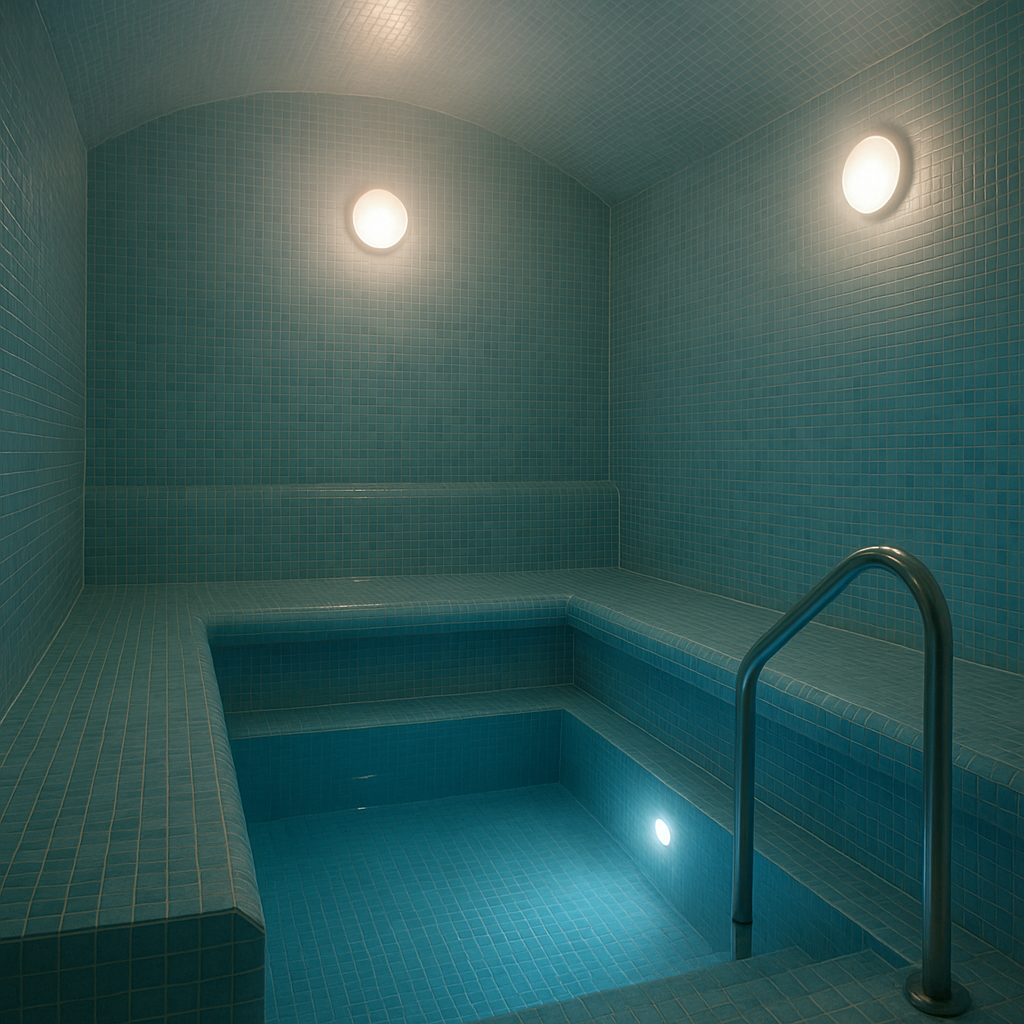Why Legionella loves warm, wet environments and how to kick it out for good.
There’s nothing quite like sinking into a bubbling hot tub after a stressful day or enjoying the meditative calm of a steam room. These aquatic havens of relaxation have become essential features in hotels, health clubs, and leisure centres across the UK and for good reason. They offer escapism, therapeutic benefits and that little touch of luxury we all crave.
But beneath the surface of these blissful retreats lurks an uncomfortable truth: these environments create near-perfect conditions for one of the most dangerous waterborne bacteria – Legionella.
At HCS Water Treatment, part of Premier Technical Services Group Ltd (PTSG), our extensive experience across hospitality and leisure sectors has given us unique insight into the challenges of maintaining water safety in these high-risk settings. Our work with local authorities and council run swimming pools has shown us exactly why these environments demand exceptional vigilance and what happens when standards slip.
The Perfect Playground: Why Leisure Water Facilities Are Legionella Magnets
Swimming pools, spas and steam rooms combine virtually all the conditions that Legionella bacteria find irresistible:
1. The Temperature Sweet Spot
Legionella thrives between 20-45°C – a temperature range that perfectly overlaps with typical settings for:
- Spa pools: Usually maintained around 37-40°C
- Hydrotherapy pools: Typically 32-36°C
- Steam rooms: Creating warm, moist environments
- Swimming pool surrounds: Warm, wet areas around pools
- Shower facilities: Often set at comfortable bathing temperatures
This thermal sweet spot allows bacteria to multiply rapidly, potentially doubling their population every few hours in untreated water.
2. The Aeration Delivery System
Legionella becomes dangerous when it’s inhaled in tiny water droplets (aerosols). Unfortunately, many leisure water facilities are essentially aerosol-generating machines:
- Spa jet systems: Forcefully injecting air into water
- Water features: Creating sprays and splashes
- Showers: Producing fine water mists
- Steam generators: Creating inhalable moisture
- Wave machines: Generating splash and spray
These features effectively turn water containing Legionella into a breathable form precisely the delivery mechanism the bacteria needs to cause infection.
3. The Biofilm Building Blocks
Leisure water facilities provide ample surfaces for biofilm formation, the slimy bacterial communities where Legionella can hide and multiply:
- Complex pipework: Miles of pipes with numerous bends and joints
- Filters and filter media: Providing enormous surface areas
- Balance tanks: Often warm, with fluctuating water levels
- Overflow channels: Wet/dry interfaces where biofilm thrives
- Jets and nozzles: Small apertures prone to contamination
Once established in biofilm, Legionella becomes particularly difficult to eliminate through standard disinfection methods.
4. The Nutrient Buffet
These environments provide the organic materials Legionella needs for growth:
- Bather load: Introducing skin cells, oils, and other organic matter
- Cosmetic products: Lotions, shampoos, and oils
- Outdoor debris: Leaves, dirt, and organic material tracked in
- Algae: In poorly maintained systems
- Other microorganisms: Which can support Legionella growth
This nutrient-rich environment fuels bacterial proliferation throughout water systems.
5. The Operational Challenges
Several operational factors further compound these risks:
- Fluctuating usage: Creating periods of stagnation
- Complex water treatment needs: Balancing multiple parameters
- High turnover of leisure staff: Affecting consistency in maintenance
- Aesthetic priorities: Sometimes competing with safety measures
- 24/7 operational expectations: Limiting maintenance windows
When Leisure Facilities Get It Wrong
The consequences of inadequate water management in these high-risk environments can be severe. A luxury holiday resort experienced a devastating Legionella outbreak traced to their spa facilities. Seven guests contracted Legionnaires’ disease, with one fatality. The investigation revealed:
- Inadequate disinfection levels in the spa water
- Poor management of the filtration system
- Insufficient staff training on water safety
- Temperature control issues in associated shower facilities
- No microbiological testing programme
The resort faced criminal prosecution, civil litigation exceeding £1 million and catastrophic reputational damage that affected bookings for years.
The Health Club Hydrotherapy Pool Incident
A premium health club’s hydrotherapy pool became the source of a Legionella colonisation that was fortunately caught during routine testing before causing illness. The investigation identified:
- Biofilm build-up in the jet systems
- Inadequate backwashing procedures
- Poor control of disinfectant levels
- Issues with the automatic dosing system
- Gaps in the monitoring records
While avoiding an outbreak, the club still faced substantial remediation costs, a two-week closure of their flagship facility, and difficult conversations with concerned members.
The Regulatory Framework: What Leisure Operators Must Know
Operators of swimming pools, spas, and steam rooms must navigate multiple overlapping regulatory requirements:
Health and Safety at Work Act 1974: Establishes the fundamental duty of care to employees and the public using leisure facilities.
Control of Substances Hazardous to Health (COSHH) Regulations 2002: Requires risk assessment and control of hazardous substances, including biological agents like Legionella.
Management of Health and Safety at Work Regulations 1999: Mandates suitable and sufficient risk assessments for activities including operation of leisure water facilities.
L8 Approved Code of Practice: Provides specific guidance on managing Legionella risk across all water systems.
HSG282: Control of Legionella in Spa Pools: This specific guidance document addresses the unique risks associated with spa pools, requiring:
- Daily water testing
- Microbiological testing at least quarterly
- Specific disinfection parameters
- Regular cleaning and disinfection routines
- Detailed operational records
PWTAG (Pool Water Treatment Advisory Group) Guidelines: Industry-standard guidance for swimming pool operation, including Legionella control measures.
The Critical Control Points: Keeping Leisure Water Safe
Effective Legionella control in leisure water facilities requires comprehensive management:
1. Rigorous Water Treatment
- Primary disinfection: Maintaining appropriate chlorine or bromine levels
- Secondary treatments: UV, ozone, or other supplementary systems
- pH control: Keeping water chemistry optimal for disinfection
- Filtration management: Proper backwashing and filter maintenance
- Water balance: Maintaining appropriate calcium hardness and total dissolved solids
2. Circulation Excellence
- Turnover rates: Ensuring complete water circulation within recommended timeframes
- Elimination of dead spots: Preventing areas of poor circulation
- Consistent operation: Maintaining circulation even during closed periods
- Balance tank management: Ensuring proper flow and exchange
- Jet and feature operation: Regular cycling of all water features
3. Cleaning and Maintenance Protocols
- Surface cleaning: Regular cleaning of all water-contact surfaces
- Biofilm management: Preventing and addressing biofilm formation
- Pipework hygiene: Periodic disinfection of complex pipework
- Systematic approach: Comprehensive cleaning schedules
- Facility closures: Periodic intensive cleaning operations
4. Monitoring and Verification
- Regular water testing: Daily checks of disinfection parameters
- Temperature monitoring: Across all associated systems
- Microbiological testing: Regular sampling for Legionella and other indicators
- Equipment verification: Ensuring dosing and monitoring equipment accuracy
- Third-party validation: Independent verification of control measures
5. Staff Competence
- Technical training: For pool plant operators
- General awareness: For all staff working in leisure environments
- Clear responsibility allocation: Defined roles for water safety
- Documented procedures: Accessible guidance for routine and emergency situations
- Supervision systems: Ensuring procedures are consistently followed
The HCS Approach to Leisure Water Safety
At HCS Water Treatment, our experience across the leisure sector has informed our comprehensive approach to water safety in these high-risk environments. We understand both the technical challenges and the operational pressures facing leisure providers.
Our leisure water safety programme combines:
1. Leisure-Specific Risk Assessment
We conduct detailed risk assessments specifically designed for complex leisure water environments:
- Comprehensive evaluation of all water systems and features
- Specific attention to aerosol-generating elements
- Assessment of biofilm risk areas
- Review of operational patterns and their implications
- Identification of critical control points for your specific facilities
2. Tailored System Design
For new installations or system upgrades, we provide design guidance focused on Legionella prevention:
- Pipework configuration to minimise dead legs
- Appropriate sizing of balance tanks and circulation systems
- Specification of suitable treatment technologies
- Integration of monitoring points and sampling facilities
- Future-proofed systems that anticipate regulatory developments
3. Comprehensive Monitoring Programmes
We develop monitoring regimes appropriate to the risk level:
- Customised testing schedules
- Digital record-keeping systems
- Remote monitoring options where appropriate
- Trend analysis to identify developing issues
- Clear protocols for addressing out-of-specification results
4. Staff Development
We provide specialised training for leisure facility personnel:
- Pool plant operator training with specific Legionella focus
- Front-line staff awareness programmes
- Manager-level water safety governance training
- Practical workshops for maintenance teams
- Emergency response protocol development
5. Ongoing Support
We recognise that leisure operations face continuous challenges:
- Regular review of water safety performance
- Support during regulatory inspections
- Guidance during facility modifications
- Assistance with incident investigation if required
- Updates on emerging best practices and regulatory changes
Practical Steps: Beyond Compliance to Excellence
For operators of swimming pools, spas, and steam rooms, meeting minimum regulatory requirements should be just the starting point. True excellence in water safety requires going further:
1. Embrace Technology
Modern solutions can transform leisure water management:
- Automated monitoring systems: Providing continuous oversight of critical parameters
- Remote alerting: Flagging issues before they become serious
- Digital record-keeping: Creating robust audit trails
- Analytical tools: Identifying patterns and trends
- Integration capabilities: Connecting water safety with broader facility management
2. Adopt a Risk-Based Approach
Not all systems present equal risk:
- Focus resources on highest-risk elements (spa pools typically present greater risk than conventional swimming pools)
- Develop specific protocols for features generating significant aerosols
- Implement enhanced monitoring during periods of lower usage
- Consider user vulnerability in your risk assessment
- Adapt control measures to actual operational patterns
3. Build a Water Safety Culture
Technical solutions alone aren’t enough:
- Make water safety a visible priority at all organisational levels
- Recognise and reward diligent water management practices
- Create clear escalation routes for water safety concerns
- Integrate water safety into broader health and safety governance
- Share learning from incidents and near-misses
4. Communicate Transparently
Build trust through openness:
- Consider displaying water test results publicly
- Explain temporary facility closures for water safety maintenance
- Train customer-facing staff to address water quality queries
- Provide accessible information about your water safety measures
- Be prepared to communicate effectively if issues arise
5. Plan for the Unexpected
Despite best efforts, issues can occur:
- Develop robust incident response protocols
- Train staff in emergency procedures
- Maintain relationships with water safety specialists who can provide rapid support
- Have communications templates prepared for various scenarios
- Conduct periodic scenario exercises to test preparedness
The Business Case: Why Excellence Pays
Beyond the obvious health and safety imperatives, there’s a compelling business case for exceptional water safety in leisure facilities:
Reputation Protection
In an age of instant reviews and social media:
- A single water safety incident can cause lasting reputational damage
- Positive differentiation through visible commitment to safety
- Protection of brand values and market positioning
- Consumer confidence driving repeat visits and membership retention
- Potential competitive advantage in health-conscious markets
Operational Reliability
Proactive management reduces disruption:
- Fewer unplanned closures or facility shutdowns
- Reduced emergency maintenance requirements
- More predictable operational costs
- Extended equipment lifespan through proper maintenance
- Smoother regulatory inspections and compliance verification
Risk Mitigation
The financial implications of incidents are substantial:
- Potential litigation costs from affected customers
- Regulatory fines and penalties
- Increased insurance premiums
- Emergency remediation expenses
- Business interruption losses
Staff Engagement
A strong water safety culture supports broader operational excellence:
- Increased staff confidence in management commitment to safety
- Clearer understanding of roles and responsibilities
- Improved technical competence and problem-solving capability
- Better retention of skilled maintenance personnel
- Enhanced cross-departmental collaboration
A Final Thought: From Risk to Reassurance
Swimming pools, spas and steam rooms should be environments of relaxation and wellbeing. The presence of Legionella risk doesn’t mean these facilities can’t be operated safely, it simply means they demand rigorous, informed management.
The warm, wet environments that make these facilities so appealing to users are the same conditions that make them potentially hospitable to Legionella. This inherent tension can only be resolved through expert risk assessment, comprehensive control measures, and consistent implementation.
At HCS Water Treatment, we believe that leisure water facilities can be both relaxing and safe. With the right approach, the risk of Legionella can be effectively managed, allowing operators to provide the experiences their customers desire with the safety they deserve.
Is your leisure water facility as safe as it is appealing? Contact HCS Water Treatment today on 0141 212 7247 or email us at hello@hcsuk.org to discuss how our specialist leisure water safety services can help you maintain the perfect balance between relaxation and safety. Because when it comes to Legionella, what your customers don’t know really can hurt them.


